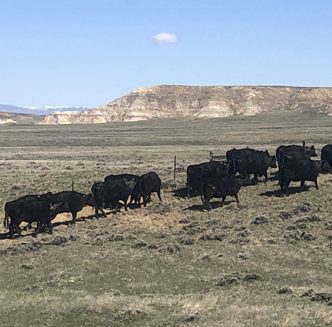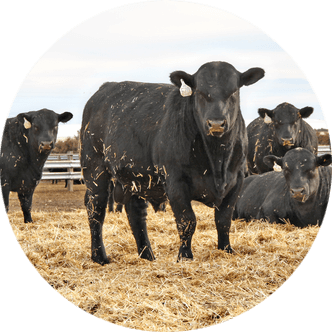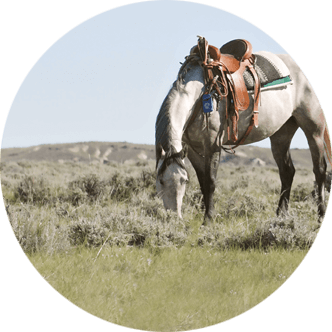UW Extension: Estrus Synchronization for Natural Service Breeding
By: Chance Marshall
Reproductive efficiency is essential for success in cow/calf operations. Roughly 92 percent of beef operations rely solely on natural breeding by bulls in their cow herds.
Estrus synchronization protocols are often associated with artificial insemination (AI) and are not commonly utilized by cow/calf producers. However, the development of natural service estrus synchronization protocols make it possible to improve reproductive efficiency even without AI.
This article describes how estrus synchronization can be a beneficial tool for producers looking to improve the reproductive efficiency of their herds.
Why synchronize the cow herd?
With natural service breeding, the distribution of breeding and calving activities can be spread out. This can result in a variation of calf age and size. Estrus synchronization is an effective way to frontload calving and improve calf crop uniformity and value.
By utilizing an estrus synchronization protocol, cattleman can concentrate the breeding of more females earlier in the breeding season. This results in a higher percentage of calves being born early in the calving season.
Calves born earlier in the calving season are older and typically weigh more at weaning.
A tri-state study showed when estrus synchronization was used, there was a 13- to 14-day age advantage and calves weighed 22 to 40 pounds heavier at weaning.
It is also well documented heifer calves born in the first 21 days of calving season have greater herd longevity compared to herd mates born later in the calving season. Early-born heifers have improved first service conception rates because they are allowed more days to reach puberty and are born from fertile dams.
Additionally, synchronization allows for concentration of labor around calving, as more calves will be born closer to the same time.
Thin cows or cows that calved late may not be cycling naturally by breeding season. However, estrus synchronization protocol, including the use of a controlled internal drug release (CIDR) implant, could keep a cow from becoming an open cull cow.
By synchronizing with a CIDR, it is possible to prime a cow’s cycle back into action and get her rebred. It is also possible to induce cyclicity in prepubertal heifers.
Efforts to maintain cows in a 365-day calving window is an important economic consideration for cow/calf producers.
Bull power considerations
Before using an estrus synchronization protocol, it is important to make sure there is enough bull power to cover a larger number of females coming into heat during a shorter time frame.
Limiting pasture size and terrain will help with access to females. Also, ensuring producers have an adequate ratio of bulls to cows is important – a one-to-20 or one-to-25 bull to cow ratio is recommended.
Mature bulls with experience tend to be better suited for natural service synchronization protocols compared to yearling bulls.
Conducting breeding soundness exams on all bulls ahead of the breeding season is highly recommended, especially when estrus synchronization is used.
Natural service protocols
Natural service protocols differ slightly from AI protocols but there are still several proven options available to meet different budgets and labor resources.
Natural service synchronization protocols are designed to shorten breeding activity. It is a misconception all females will cycle at the exact same time. Assuming bulls are fertile and females are in good shape, 60 to 70 percent pregnancy rates during the first 21 days can be expected, which is comparable to expectations for an AI synchronization system.
Four effective natural service protocols include a one-shot prostaglandin (PG) system, where bulls are introduced and one dose of PG per head is administered on the fifth day of exposure; a seven-day CIDR program, where a CIDR is applied and removed on the seventh day, then bulls are introduced; a 14-day CIDR program, where a CIDR is applied, removed on the 14th day and 10 days after removal, bulls are introduced and a melengestrol acetate (MGA) program which includes feeding MGA 14 days, waiting 10 days after MGA removal and introducing bulls. This program is for heifers only.
Whether producers plan to AI or let the bulls do the work breeding this year, estrus synchronization could be a valuable tool to improve reproductive efficiency of cow herds. However, being prepared and evaluating resources ahead of time is important.
Chance Marshall is a University of Wyoming Extension educator based in Fremont County. He can be reached at 307-332-2363 or cmarsha1@uwyo.edu.





